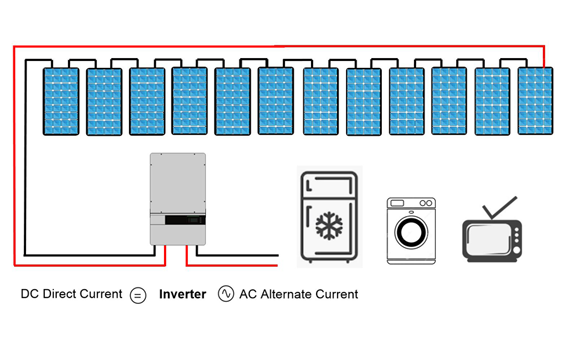| How do PV Systems work? | ||
|
Photovoltaics (often abbreviated as PV) is a simple and elegant method of harnessing the sun's energy. PV Modules (solar cells) are unique in the way they directly convert solar radiation into electricity, with no noise, pollution or moving parts, making them robust, reliable and long lasting. Its as simple as that. There are no moving parts. The fuel source (sunlight) is free, abundant and widely distributed, available to every country and person in the world. It's no surprise that for the last two decades, photovoltaics has been the fastest growing industry for its size. Continuing at the present growth rate of 40% for the next two decades will allow photovoltaics to be the worlds largest energy source. |
 |
|
|
Sunlight is composed of miniscule particlees called photons, which radiate from the sun. These photons are charged with energy. As these photons hit the silicon atoms of the solar cell they transfer their energy to loose electrons, knocking them clean off atoms.
Simply put, a solar panel works by allowing photons, or particles of light, to knock electrons free from atoms, generating a flow of electricity. Solar panels actually comprise many, smaller units called photovoltaic cells. (Photovoltaic simply means they convert sunlight into electricity.) |
 |
|
|
Solar panels produce Direct Current (DC). Most of your appliences in your house run on Alternate Current (AC). To convert DC to AC we install an inverter. The inverter converts the “DC” power into alternating current or “AC” power. AC power is the kind of electric juice that your television, computer, and toasters use when plugged into the wall outlet. The produced electricity can be used directly during the day.
|
 |
|
| How do PV Systems work? | ||
| On Grid PV Systems | ||
| Hybrid PV Systems | ||
| Netmetering / Feed In Tarif | ||
| Off Grid PV Systems | ||
| PV System Yield | ||
| Elecricity Consumption | ||
| FAQ | ||
| Home |


